In an earlier post, I presented an analysis of the relationship between the average significance criterion scores provided independently by individual reviewers and the overall impact scores determined at the end of the study section discussion for a sample of 360 NIGMS R01 grant applications reviewed during the October 2009 Council round. Based on the interest in this analysis reflected here and on other blogs, including DrugMonkey and Medical Writing, Editing & Grantsmanship, I want to provide some additional aspects of this analysis.
As I noted in the recent post, the criterion score most strongly correlated (0.74) with the overall impact score is approach. Here is a plot showing this correlation:
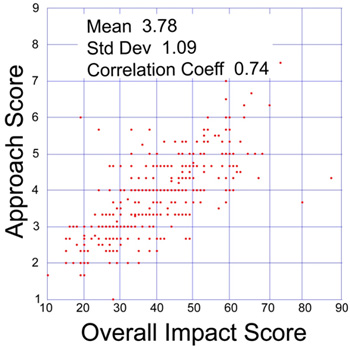
Similarly, here is a plot comparing the average innovation criterion score and the overall impact score:
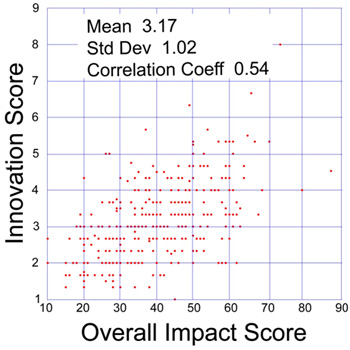
Note that the overall impact score is NOT derived by combining the individual criterion scores. This policy is based on several considerations, including:
- The effect of the individual criterion scores on the overall impact score is expected to depend on the nature of the project. For example, an application directed toward developing a community resource may not be highly innovative; indeed, a high level of innovation may be undesirable in this context. Nonetheless, such a project may receive a high overall impact score if the approach and significance are strong.
- The overall impact score is refined over the course of a study section discussion, whereas the individual criterion scores are not.
That being said, it is still possible to derive the average behavior of the study sections involved in reviewing these applications from their scores. The correlation coefficient for the linear combination of individual criterion scores with weighting factors optimized (approximately related to the correlation coefficients between the individual criterion scores and the overall impact factor) is 0.78.
The availability of individual criterion scores provides useful data for analyzing study section behavior. In addition, these criterion scores are important parameters that can assist program staff in making funding recommendations.


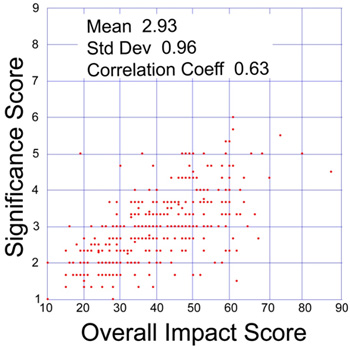
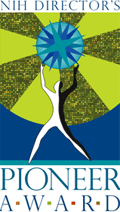 NIH has announced the 2011 competitions for the NIH Director’s Pioneer Awards and the NIH Director’s New Innovator Awards. These awards support exceptionally creative scientists who propose highly innovative—and often unconventional—approaches to major challenges in biomedical or behavioral research. Both programs are part of the NIH Common Fund and are managed by NIGMS.
NIH has announced the 2011 competitions for the NIH Director’s Pioneer Awards and the NIH Director’s New Innovator Awards. These awards support exceptionally creative scientists who propose highly innovative—and often unconventional—approaches to major challenges in biomedical or behavioral research. Both programs are part of the NIH Common Fund and are managed by NIGMS.
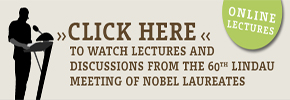

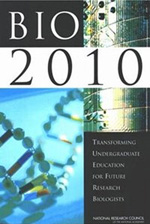 Last month, I attended the “Beyond Bio2010” conference held at the National Academy of Sciences. The meeting highlighted the progress made in implementing the Bio2010 recommendations, chiefly to transform undergraduate biology education by using the quantitative sciences (mathematics, chemistry, physics, engineering and computer sciences) to study biology and vice versa.
Last month, I attended the “Beyond Bio2010” conference held at the National Academy of Sciences. The meeting highlighted the progress made in implementing the Bio2010 recommendations, chiefly to transform undergraduate biology education by using the quantitative sciences (mathematics, chemistry, physics, engineering and computer sciences) to study biology and vice versa.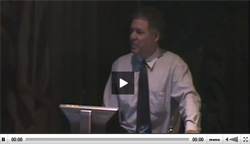 The Advisory Committee to the Director, NIH (ACD) is a group knowledgeable in the fields of research pertinent to the NIH mission. It includes individuals from the academic and private sector research communities as well as representatives of the general public.
The Advisory Committee to the Director, NIH (ACD) is a group knowledgeable in the fields of research pertinent to the NIH mission. It includes individuals from the academic and private sector research communities as well as representatives of the general public.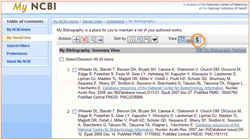 NIH has announced a significant upgrade to the citation management capability of investigators’ personal profiles in the eRA Commons.
NIH has announced a significant upgrade to the citation management capability of investigators’ personal profiles in the eRA Commons.